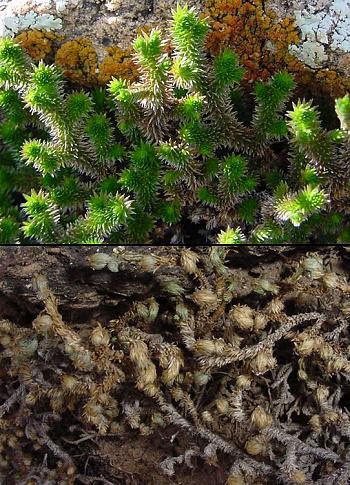5.4: Avoidance of crystallization by glass formation
- Page ID
- 7810
As previously discussed, a common biological problem is dehydration.
Crystal formation upon dehydration can be avoided by forming a glass. Glasses are amorphous, and form by a continuous process (no interface or solidification front is involved). Their structure is comparable to that of a liquid (some short-range order is observed, but no long-range order), but their properties are those of a solid.
In response to dehydration, some living systems alter the composition of the cytosol in order to favour glass formation, for example by hydrolysis of starch to sugar. As can be seen on the sucrose-water phase diagram, the higher the sugar content, the higher the temperature at which a glass can be formed. Using this mechanism, complete dehydration can be survived.
Examples of living systems that exploit the formation of glass in order to preserve life
- Resurrection Plant
Various different species fall in the category of "resurrection plant", including the Rose of Jericho and Selaginella lepidophylla. When dry, they appear brown and lifeless, but after rain they become moist and green. This can be seen in the image below, which shows the Selaginella lepidophylla plant in both the moist and dry states.
Image reproduced with permission of Brad Fiero, Pima Community College, Tucson, Arizona
- Flatworms
Under the stress of dehydration, some species of simple flatworm are able to convert starch into sugars, which promotes the formation of glass. - Seeds
Sucrose is the most abundant sugar within mature seeds, and its ability to form a glass in dry tissues greatly slows the chemical reactions within the seed that could lead to its degradation and hence contributes to the longevity of seeds. When seeds are planted after storage in the dry glassy state, they take up moisture from the ground and become rehydrated, and are then able to germinate.
Glass formation is similarly exploited in dried foods such as pasta, drug storage for drugs such as insulin for inhalation, and organ preservation. In these cases, the glassy state is used to inhibit degradation.


